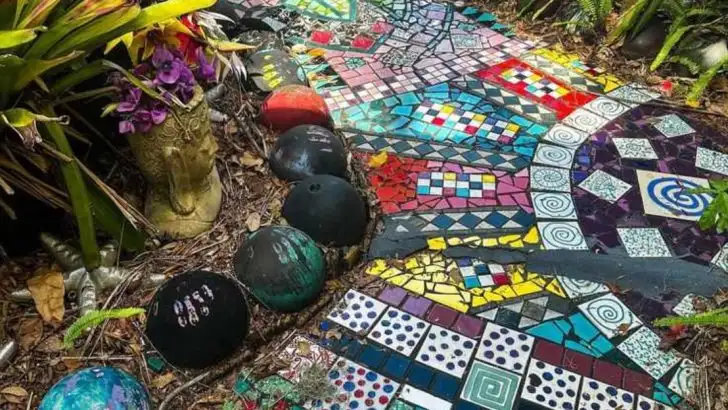Gardening doesn’t always have to be an expensive hobby. In fact, there are plenty of creative and resourceful ways to enhance your garden without spending any money. From repurposing old household items to utilizing natural resources, the possibilities are endless. Here, we’ve curated a list of 20 ingenious items you can craft to give your garden a unique touch. Each idea is not only budget-friendly but also adds a personal and sustainable element to your outdoor space. Dive into these suggestions and see how you can get creative without opening your wallet.
Birdhouse from Scrap Wood
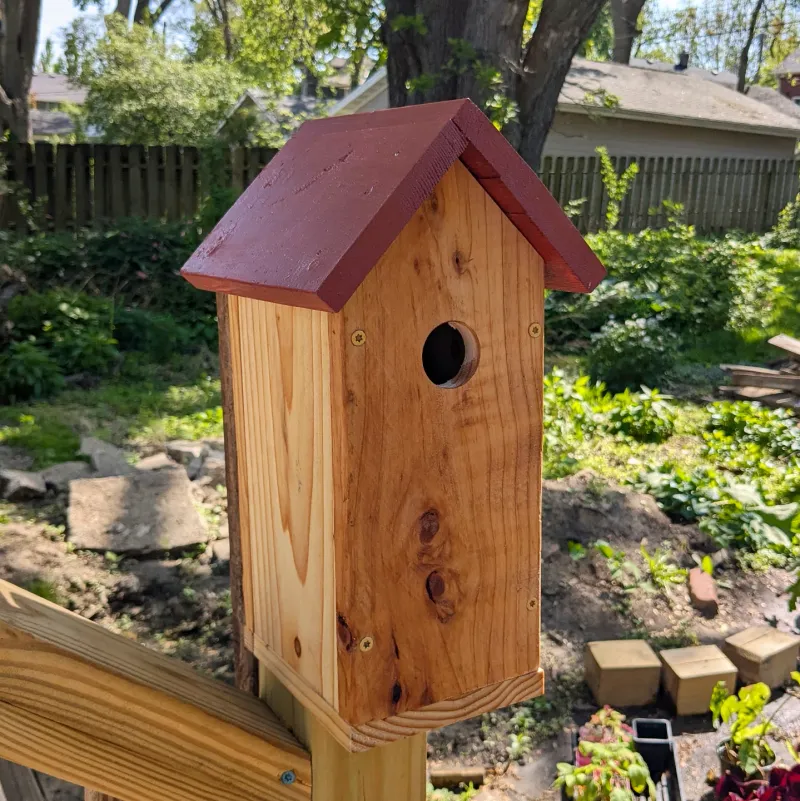
Ever thought about turning that pile of scrap wood into a sanctuary for birds? A birdhouse crafted from leftover wood not only attracts feathered friends but also adds charm to your garden. Begin by gathering pieces of old wood from previous projects or furniture. Cut and assemble them into a small house, ensuring there’s an entrance for the birds. Place it in a spot where it’s easily visible yet safe from predators. Enjoy the melodies of new avian visitors as they make it their home.
Compost Bin from Pallets
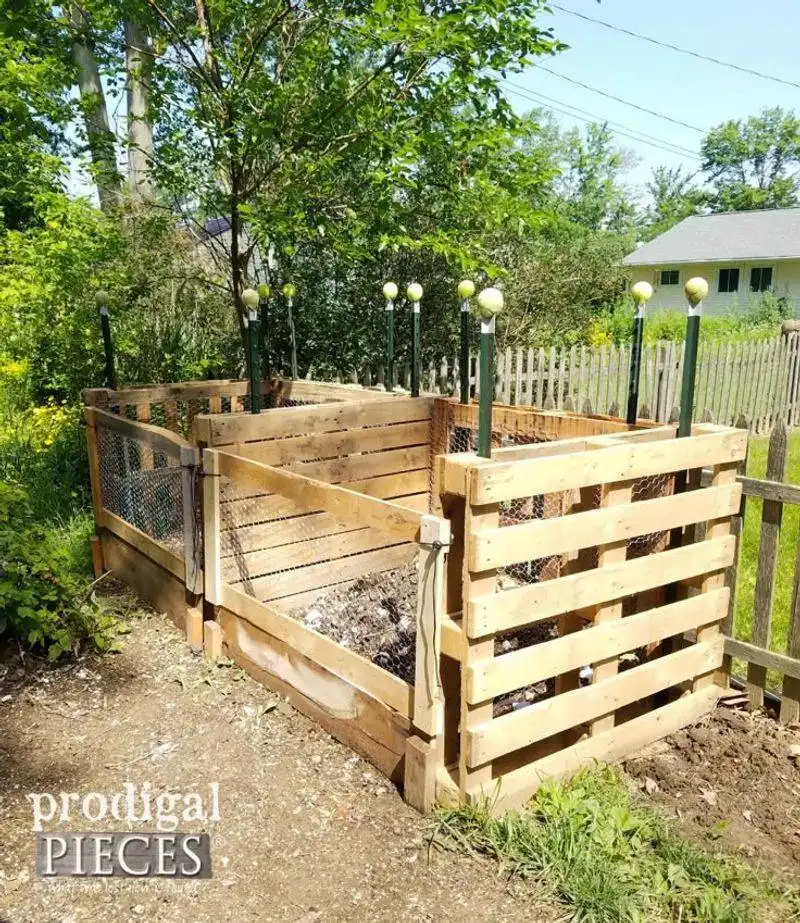
Transform wooden pallets into a compost bin to recycle kitchen scraps and garden waste. This eco-friendly approach not only reduces waste but also enriches your soil over time. Arrange pallets into a square or rectangular shape and secure them tightly. Ensure there’s a way to easily access the compost for turning. As you add layers of organic matter, you’ll notice how quickly waste turns into nutrient-rich compost, enhancing garden productivity.
Planter from Old Tires
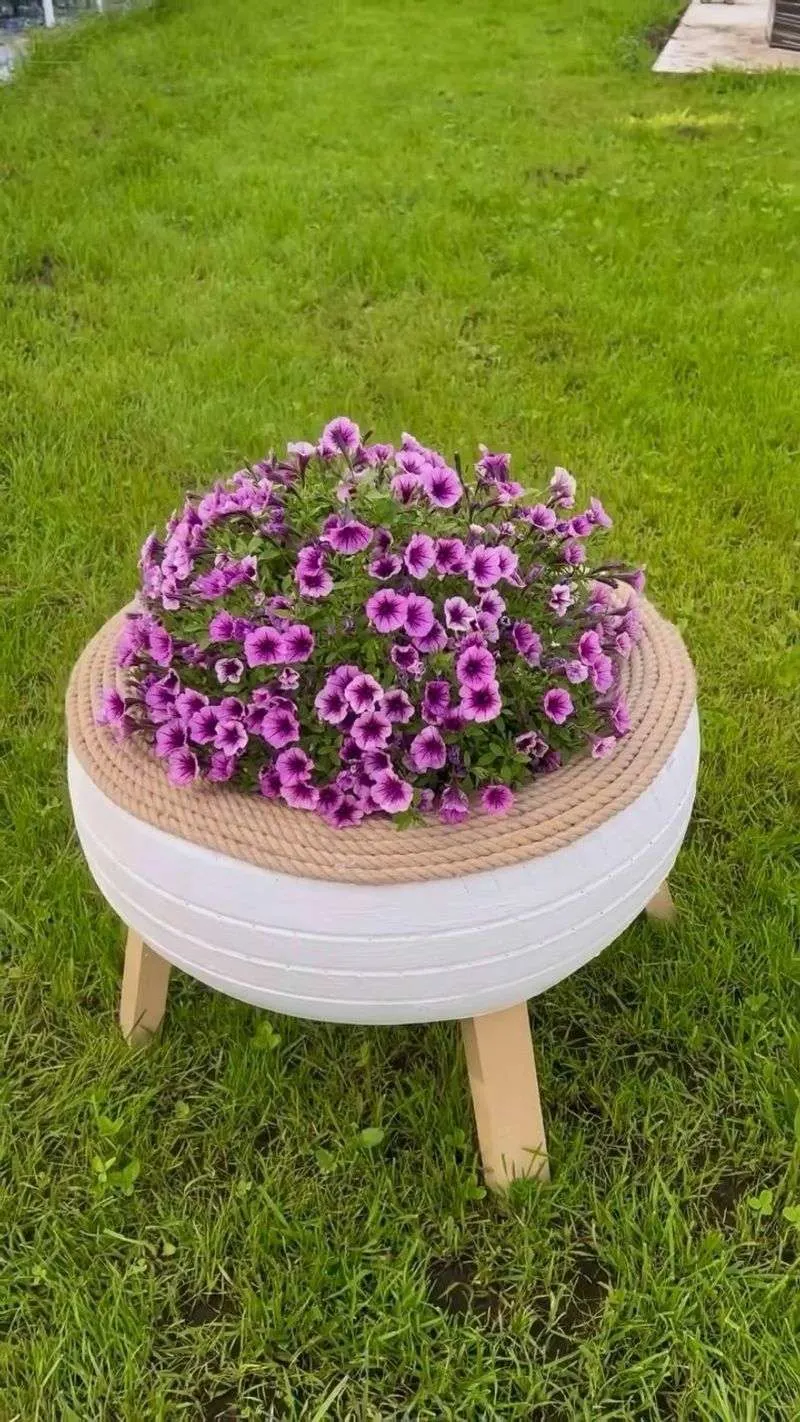
Old tires lying around? Give them a new life as planters. Paint them with bright colors to add vibrancy, stack them if you wish, and fill them with soil and plants. Tires are sturdy and can handle various weather conditions, making them perfect for outdoor use. This project is not just sustainable but also brings a pop of color and creativity to any garden setting. Experiment with different plants to create eye-catching displays.
Garden Path from Broken Tiles
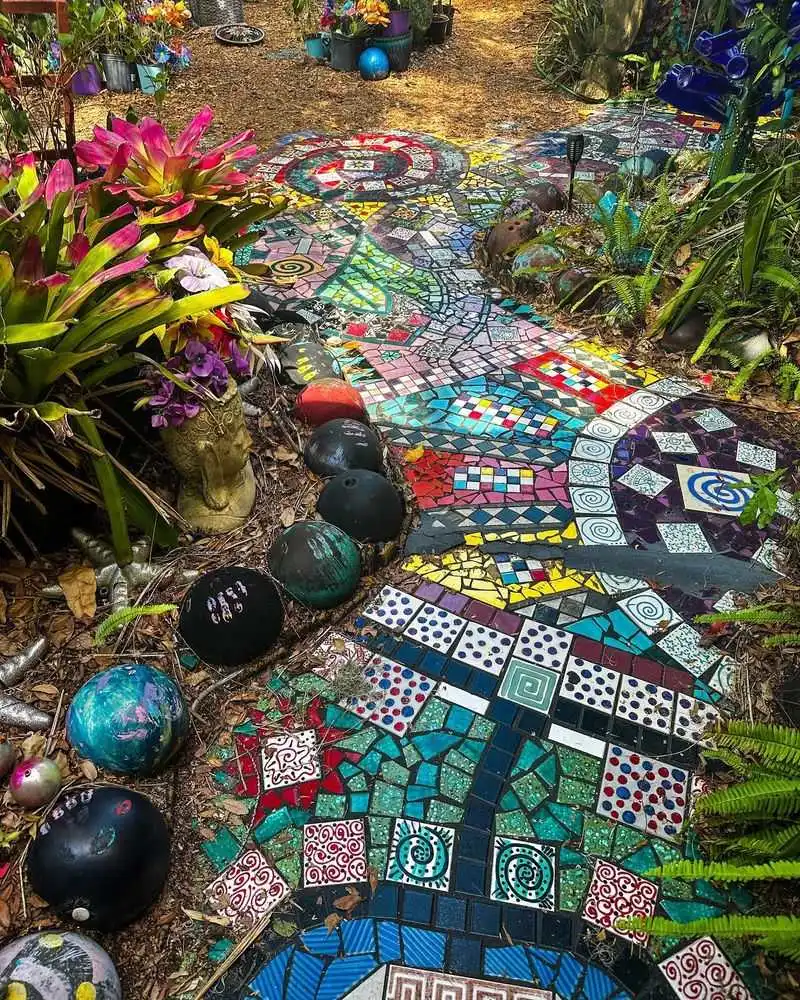
Those broken tiles left from your last renovation can create a stunning garden path. Arrange them into a mosaic pattern that leads through your garden. Not only is this a practical solution for utilizing waste material, but the colorful bits can add artistic flair to your landscape. With each step, you’ll enjoy the unique combination of colors and textures beneath your feet, transforming your garden into a walkable work of art.
Wind Chime from Cutlery

Old forks and spoons are perfect for a melodious wind chime. String them together with wire or string, and hang them in a breezy spot. Each piece of cutlery offers a different tone, creating a symphony with the wind’s play. This project not only recycles unused items but also adds an auditory dimension to your garden. Over time, you’ll find the gentle clinking sounds providing a soothing backdrop to your outdoor time.
Vertical Garden from Plastic Bottles
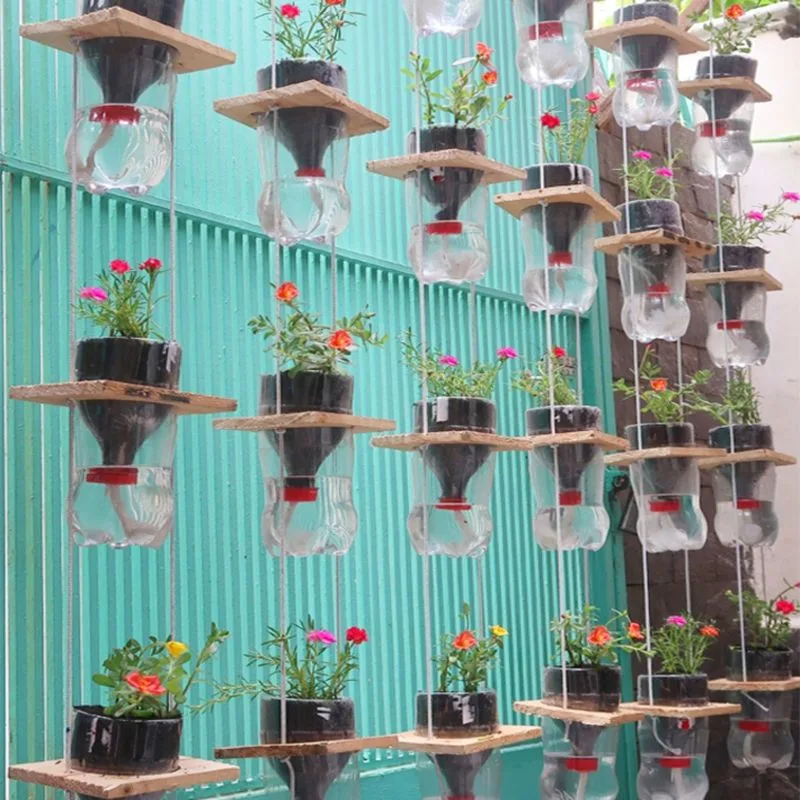
An innovative way to recycle plastic bottles is by creating a vertical garden. Cut out sections of the bottles, fill them with soil, and plant herbs or flowers. Attach them to a wall or fence to save space and cultivate more plants. Not only do you clear up plastic waste, but you also gain fresh produce or blooms. This method is perfect for urban gardeners with limited space, providing a green solution to small areas.
Stepping Stones from Concrete Rubble
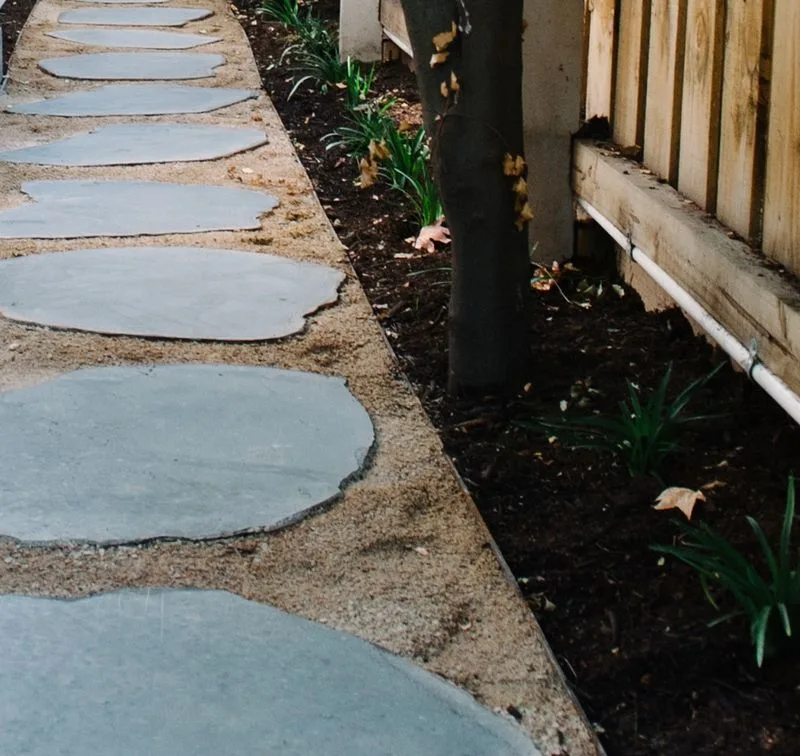
Leftover concrete rubble can form unique stepping stones. Gather pieces of leftover concrete and arrange them in a garden pathway. These stepping stones offer a rustic charm and are quite durable. As they settle into the earth, they also encourage grass and moss to grow around them, enhancing the natural look. This project is a practical use of construction leftovers while adding character to your landscape.
Herb Spiral from Stones
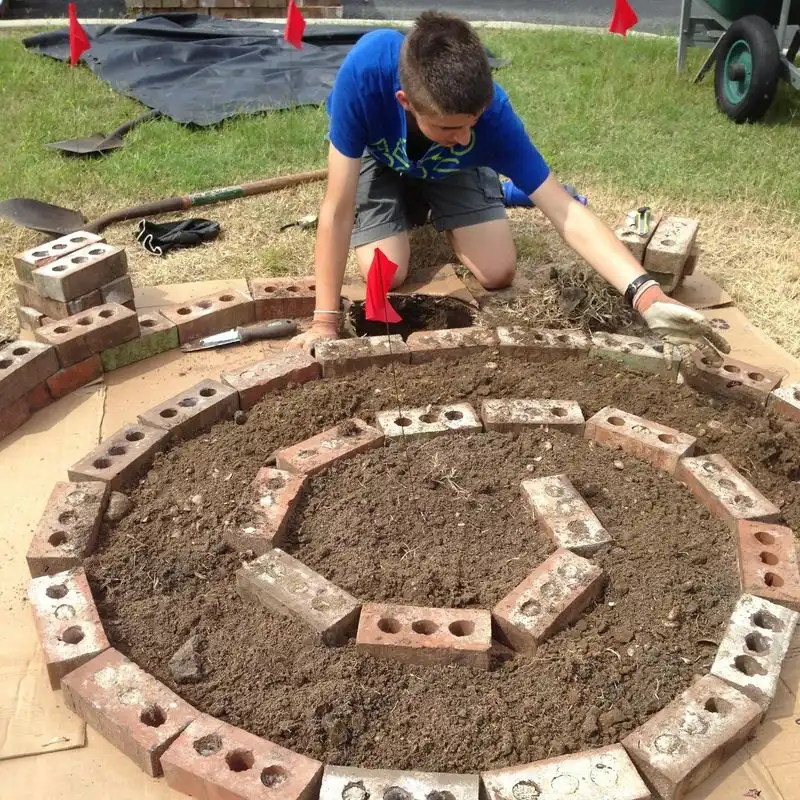
Build a spiral-shaped herb garden using smooth stones. Arrange the stones to form a spiral that rises in the center. This design not only looks stunning but also allows for diverse planting conditions. The top is perfect for herbs that prefer dryer soil, while the bottom can accommodate moisture-loving plants. This clever use of stones and earth optimizes space and supports a variety of herbs, creating a visual and culinary delight.
Butterfly Feeder from Old Plates

Old, colorful plates can transform into a butterfly feeder. Attach a plate to a stake, and place it among flowers. Add some water and sugar solution or a piece of fruit to attract butterflies. This project not only gives old crockery a new purpose but also supports local biodiversity. As butterflies visit, they pollinate plants, contributing to a healthier ecosystem. The vibrant plates add visual interest, as well.
Trellis from Bed Frames
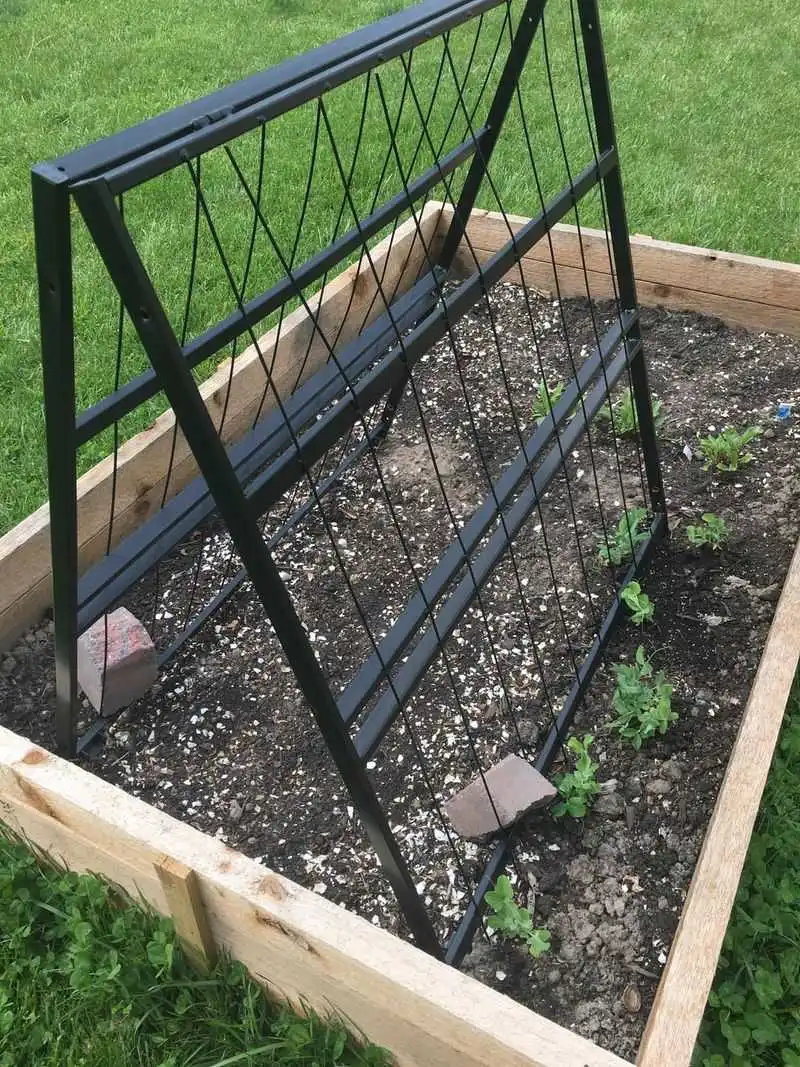
An old bed frame can become a sturdy trellis for climbing plants. Remove the mattress support and use the frame as a structure for peas, beans, or flowering vines. The metal or wood frame is often robust enough to support even the heaviest of plants. This repurposed trellis not only saves money but adds vertical interest to your garden, allowing for more growth without taking up additional ground space.
Garden Labels from Broken Pots
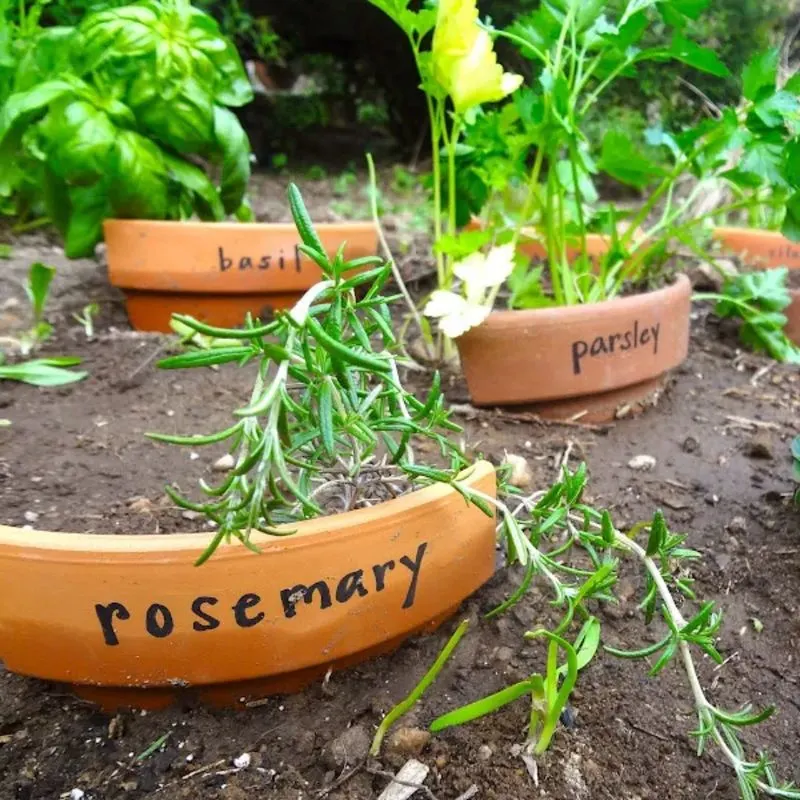
Those broken terracotta pots can serve as rustic garden labels. Write plant names on the shards and place them at the base of your plants. This is a simple yet effective way to keep track of what’s growing where. The earthy color of the terracotta blends naturally with the garden environment. It’s a creative use of broken pottery, ensuring nothing goes to waste and that your garden remains organized and charming.
Watering Can from Milk Jug

Transform a plastic milk jug into a functional watering can. Puncture holes in the lid to create a spout. This simple tool is perfect for gentle watering of seedlings and delicate plants. It’s lightweight and easy to maneuver, making it an excellent option for children helping in the garden. By repurposing household items, you’re not only saving money but also reducing plastic waste in a practical and inventive way.
Plant Markers from Wooden Spoons
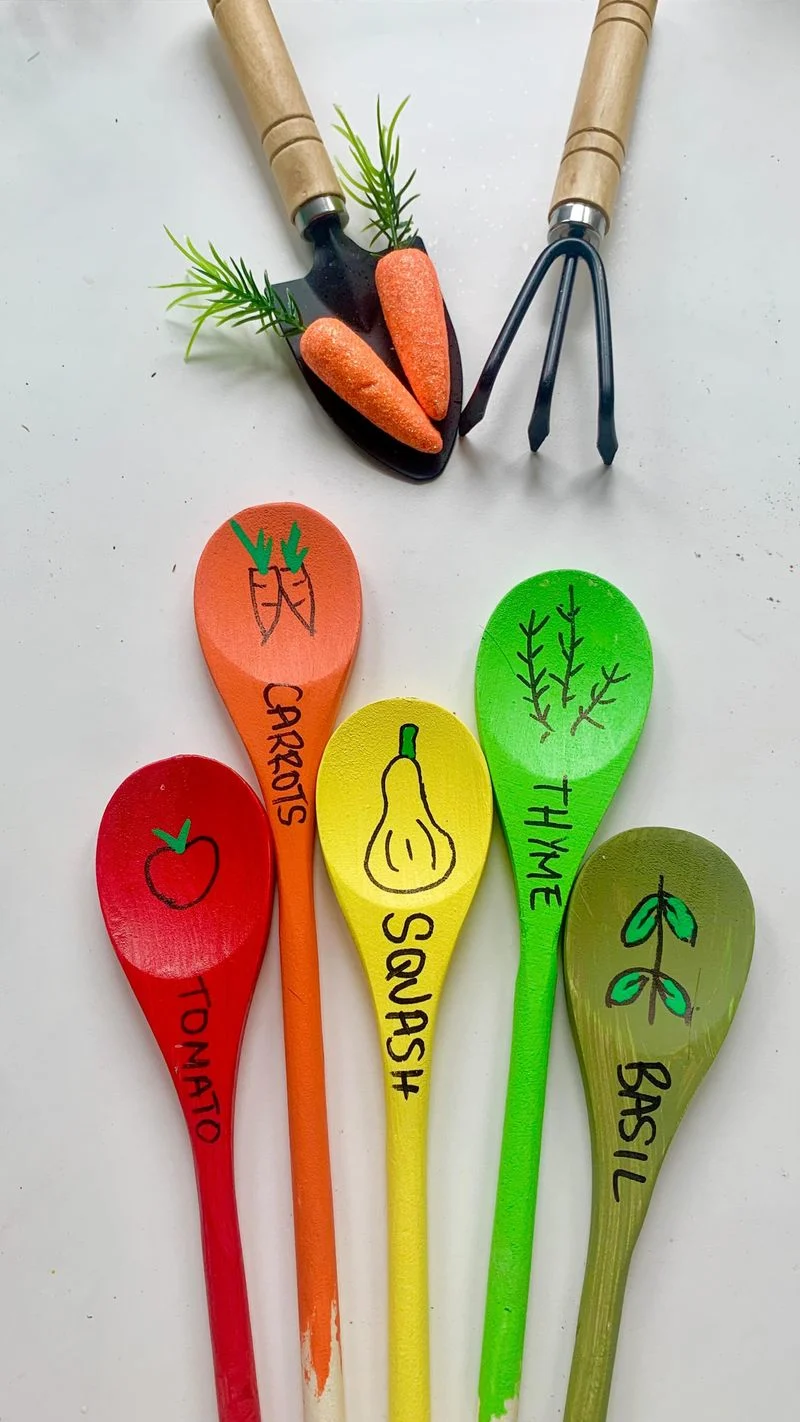
Unused wooden spoons make excellent plant markers. Write the plant names on the handles and place them in the soil. This method is both durable and environmentally friendly. The spoons are easily visible and can withstand weather conditions. Plus, they add a quaint touch to your garden, making it easier to identify plants at a glance. Utilizing kitchen items in the garden highlights creativity and sustainability.
Hanging Planters from Shoes
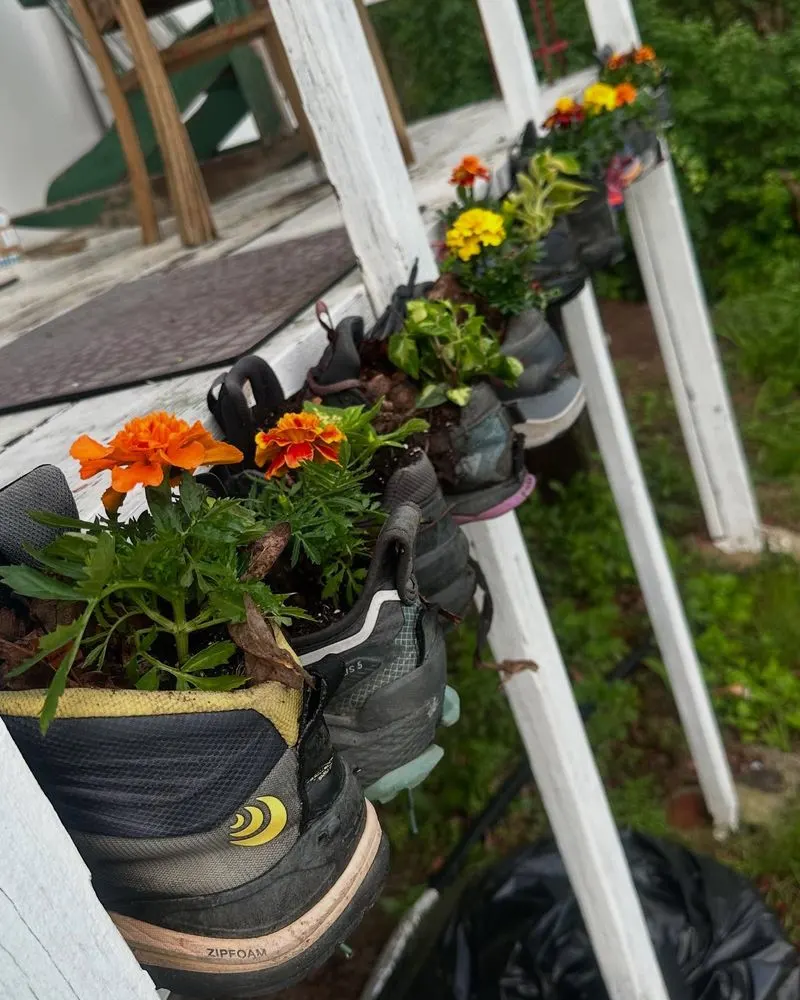
Have any old shoes gathering dust in your closet? Convert them into hanging planters. Drill drainage holes in the soles, fill with soil, and plant. Hang them with ropes on a patio or porch. Shoes add a whimsical touch and are perfect for trailing plants. This not only repurposes something otherwise discarded but also adds unique character to your garden space. It’s a fun and creative way to showcase plants at different heights.
Bug Hotel from Twigs and Leaves
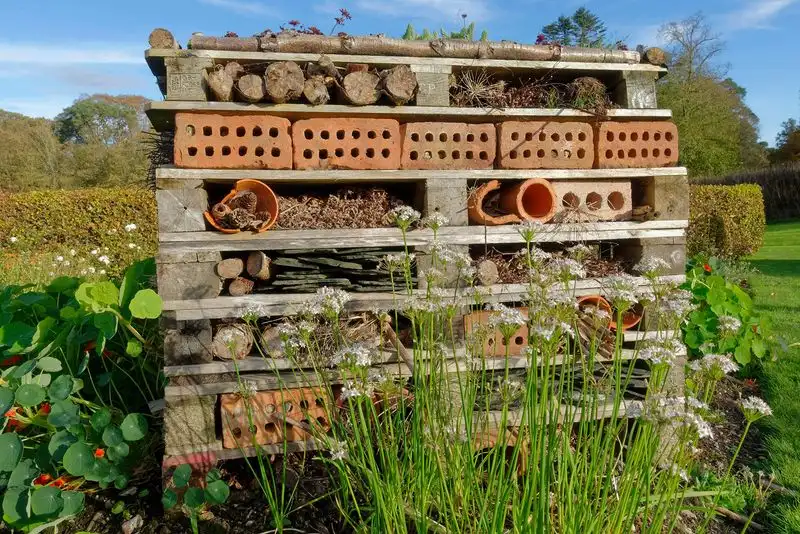
Creating a bug hotel provides a safe haven for beneficial insects. Use twigs, leaves, and hollow stems to fill sections of a wooden frame. Position the hotel in a quiet corner of the garden. This not only supports biodiversity by attracting pollinators and pest controllers but also enriches your garden’s ecosystem. Watching the different insects take up residence becomes an educational and rewarding experience for all ages.
Bird Bath from Old Dishes

Old dishes can be stacked and secured to create a charming bird bath. This provides a spot for birds to drink and bathe, enhancing your garden’s wildlife appeal. Consider using a variety of dish sizes and patterns for an eye-catching centerpiece. The sight of birds enjoying a splash can be delightful. Plus, this project makes good use of those mismatched dishes cluttering your cupboards, turning them into a feature that benefits nature.
Mosaic Table from Broken Plates
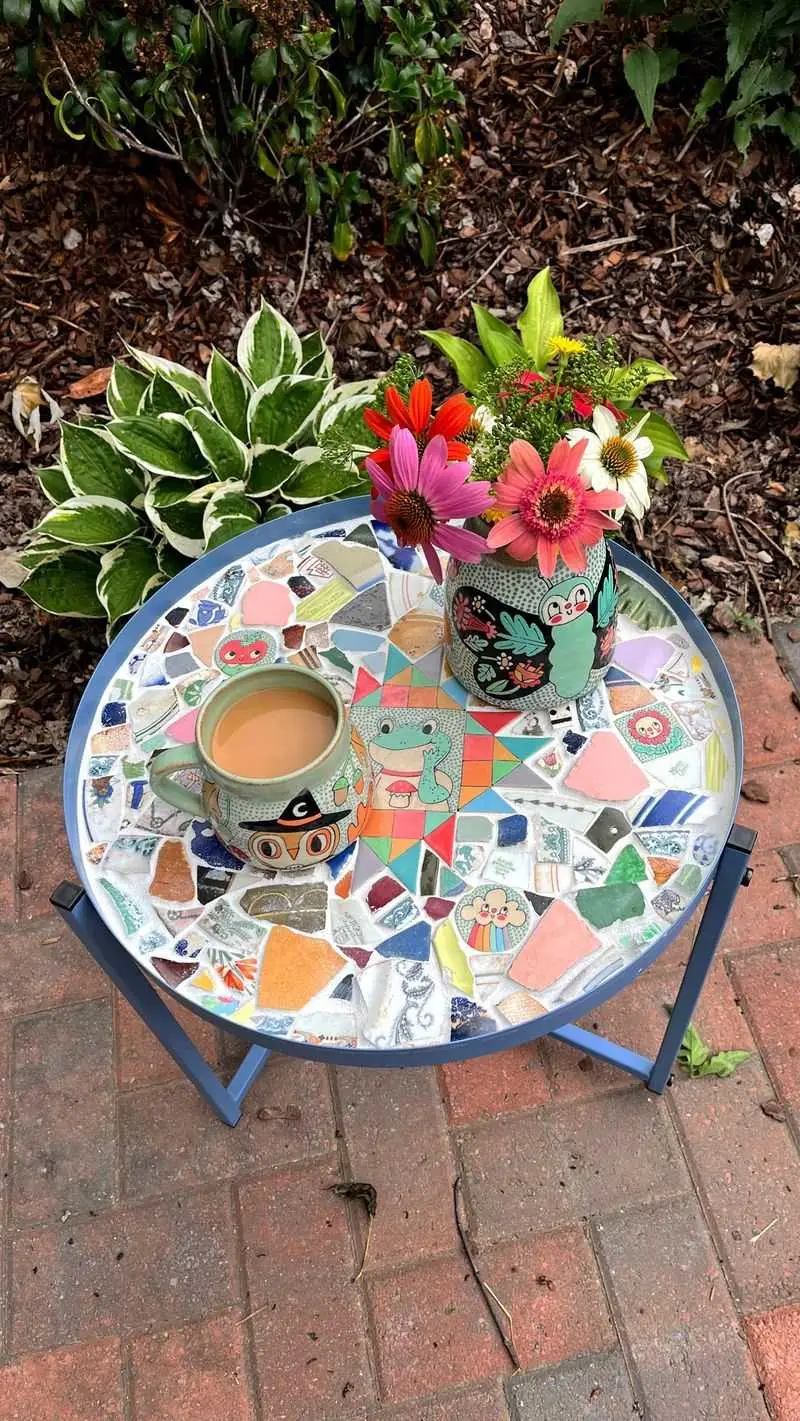
Turn broken plates into art by creating a mosaic table. Adhere the pieces to the surface of an old table for a vibrant, durable finish. This project breathes new life into both the table and the plates, turning cast-offs into a centerpiece. Each shard tells a story through its color and pattern, making the table unique. It’s a great conversation starter and adds a splash of color and creativity to any patio or garden nook.
Seedling Pots from Eggshells
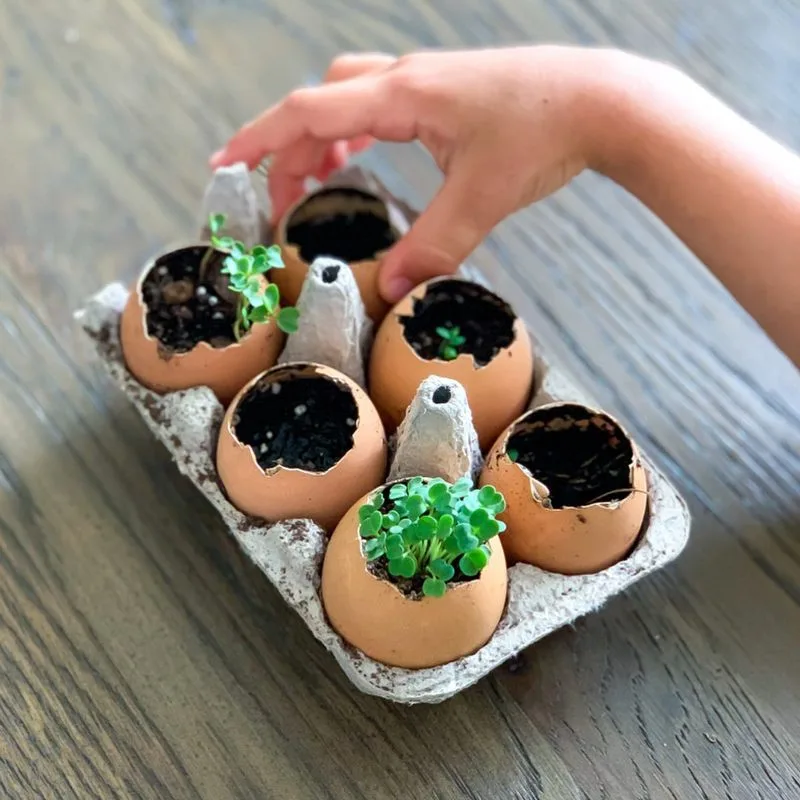
Eggshells make excellent biodegradable starter pots for seedlings. Rinse and fill them with soil, plant seeds, and place them in an egg carton to keep upright. Once seedlings are ready to plant, crush the shell slightly and plant it directly in the ground. This method enriches the soil as the shell decomposes, providing a calcium boost. It’s an innovative and eco-friendly way to start a garden while reducing kitchen waste.
Rain Gauge from a Jar

Monitor rainfall with a homemade rain gauge using a glass jar. Mark the outside with measurement lines and place it in an open area. This simple tool helps you keep track of how much rain your garden receives, aiding in better water management. It’s a straightforward way to repurpose a glass jar and gain valuable insights into your garden’s watering needs. The transparency of the jar makes it easy to read and maintain.
Insect Trap from Plastic Bottles
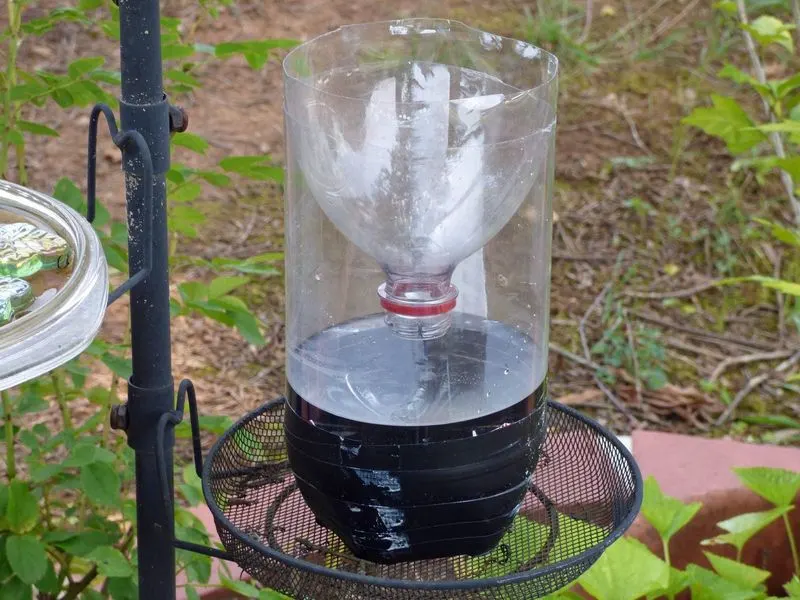
Combat garden pests with an insect trap made from a plastic bottle. Cut the top off, invert it as a funnel, and place it back into the bottle. Fill with a mixture that attracts insects. Hang in trouble spots to reduce pest populations naturally. This eco-friendly solution recycles plastic waste into a useful garden tool, protecting plants without chemicals. It’s an effective way to manage pests while keeping your garden green.

